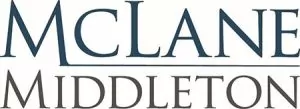Published: Seacoast Online
May 30, 2025
As you drive along New Hampshire's shoreline through the coast of Maine, you may notice several homes are being elevated or raised up on piers, posts, columns, or pilings. Why? The answer is likely because of the regulations set by the Federal Emergency Management Agency ("FEMA"). FEMA plays a central role in promoting disaster resilience across the United States, particularly in areas vulnerable to flooding, such as New Hampshire and Maine's seacoast.
FEMA's Substantial Improvement Rule
One of FEMA's critical regulatory tools in mitigating flood damage is the Substantial Improvement Rule, a key component of the National Flood Insurance Program ("NFIP"). If you own a home in a flood zone and are thinking about renovating or repairing your damaged property, the Substantial Improvement Rule will likely impact your plans and budget. The Substantial Improvement Rule ("Rule") governs the improvement or repair of existing structures in flood-prone areas by requiring certain updates intended to enhance a building's resilience to future flood events. Thus, FEMA uses the Rule as an opportunity to reduce future flood damage.
Most communities in New Hampshire and Maine, particularly the coastal areas, participate in the NFIP. As part of this participation, these communities must adopt and enforce floodplain management ordinances, which contain minimum NFIP requirements applicable to new construction in FEMA designated Special Flood Hazard Areas. However, these minimum NFIP requirements are not limited to new structures, they also apply to existing structures with proposed "substantial improvements" and to the repair of "substantial damage". Local building officials (usually the code enforcement office or building inspector) determine whether proposed work qualifies as a substantial improvement or repair of substantial damage.
FEMA distinguishes between "substantial damage" and "substantial improvement", though both trigger similar compliance requirements:
- Substantial Damage occurs when a building is damaged by any cause (including flooding, fire, or earthquake), and the cost of repairs is 50% or more of the building's pre-damage market value.
- Substantial Improvement occurs when the costs of repairs, reconstruction, additions, and other voluntary improvements (not related to damage) equal or exceed 50% of the building's market value before the start of construction.
When a property meets the 50% threshold, the structure must be brought into compliance with current NFIP minimum requirements. This usually means raising the building to the base flood elevation ("BFE") or taking other flood mitigation steps, depending on the community's adopted floodplain ordinances.
The calculation is typically performed by local code officials at the time a building permit application is filed with the town. Some towns have a separate application process that accompanies the building permit application.
When determining whether the Rule applies, local officials will: (1) determine the cost of work for the proposed improvement or repair of damage; (2) determine the market value of the building – the calculation does not include the value of land, which is often higher; (3) determine whether the costs of work equals or exceeds 50% of the building's market value, typically providing such determinations to property owners; and (4) require owners to obtain permits to bring substantially improved and substantially damaged structures into compliance with the NFIP minimum requirements. Property owners may appeal decisions by providing additional information, especially relating to estimates of costs and market values used to make the determination.
Items Included and Excluded in the 50% Calculation:
Items included in the calculation are broad and leave room for some discretion from the local code enforcement officials. Costs of improvements include the complete costs associated with the proposed work. Costs to repair include the costs of all work necessary to restore a damaged building or manufactured home to its pre-damage condition. The following is a non-exhaustive list of included costs:
- Materials and labor, including the estimated value of donated or discounted materials and owner or volunteer (do-it-yourself) labor;
- All structural elements and exterior finishes (e.g. foundation, bearing walls, beams, windows, siding, doors, roofing)
- All interior finish elements (e.g. flooring, tile, drywall, painting, kitchen and bath cabinetry and fixtures, countertops, hardware, and insulation)
- All utility and service equipment (e.g. HVAC equipment, light fixtures, ceiling fans, water filtration systems)
Excluded costs generally consist of costs that are not directly related to the building's structural integrity or value, such as costs relating to the preparation of building plans, obtaining permits, trash removal and related fees, exterior improvements like landscaping, and personal property like furniture and appliances. Additionally, costs to correct code violations or alterations to historic structures that do not impact their historic designation are typically exempt.
Summary
Before undertaking a renovation or repair project, it is important to review the local ordinance and NFIP requirements to determine if the cost of the improvements or repairs will meet or exceed the 50% threshold, triggering FEMA's compliance requirements.
The content of this article is intended to provide a general guide to the subject matter. Specialist advice should be sought about your specific circumstances.


